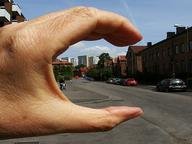Quiz Answer Key and Fun Facts
1. What marine invertebrate is often associated with the Chesapeake Bay?
2. In what part of the modern world was the ancient land of Canaan located?
3. What material would you use if you wanted to build a cairn?
4. Which of these words would NOT be a suitable synonym for the adjective "cavalier"?
5. Enjoyed in various parts of the US and Canada, what kind of food is chow-chow?
6. In what part of England is the historic county of Cumberland located?
7. The central areas of most Italian cities and towns feature something called a "corso". What does this word mean?
8. What of these winds, characteristic of the alpine region of Europe, is a warm wind similar to the Chinook of the US Pacific Northwest?
9. Which language family does Croatian belong to?
10. What metal is associated with a large canyon system found in the Mexican state of Chihuahua?
Source: Author
LadyNym
This quiz was reviewed by FunTrivia editor
LeoDaVinci before going online.
Any errors found in FunTrivia content are routinely corrected through our feedback system.
